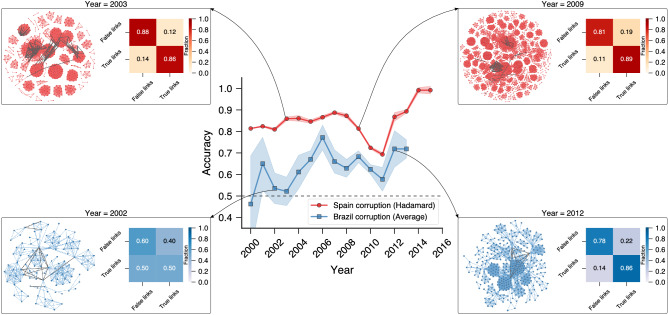Figure 4.
Predicting future partnerships in corruption networks. The central panel shows the accuracy in tasks of predicting future partnerships in the Spanish (red circles) and Brazilian (blue squares) corruption networks created considering scandals occurring up to a given year. The results for the Spanish network use the Hadamard operator, while the ones related to the Brazilian network use the average operator for creating vector representations of edges from the node embeddings obtained with node2vec. The test sets of both networks comprise edges among nodes already present in the network that emerge after the threshold year, and the same number of randomly generated false links that do not appear after the threshold year. The markers represent the average accuracy in the test sets estimated over ten realizations of the embedding and training processes (shaded regions stand for one standard deviation band) for different threshold years. The black dashed line indicates the baseline accuracy. The insets depict network visualizations where the colored edges represent connections among nodes that occurred up to the threshold year, while the gray edges represent the links that will appear after the threshold year. These insets also show confusion matrices associated with the tasks of predicting whether future links are true (rows) or false (columns).

